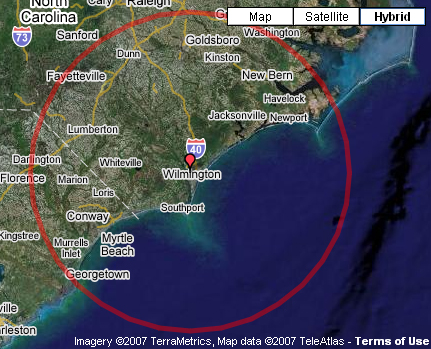What is my foodshed?
One hundred miles doesn’t seem like that much, especially when living on the coast. Half of the radius is ocean. I don’t really care for seafood, so that cuts out a lot of my food options. Anyway, my food radius looks like this:

A foodshed is –
“…borrowed from the concept of a watershed, was coined as early as 1929 to describe the flow of food from the area where it is grown into the place where it is consumed. Recently, the term has been revived as a way of looking at and thinking about local, sustainable food systems.”
– source Wisconsin Foodshed Research Project
Further –
A foodshed is a local bioregion that grows food for a specific population.
The foodshed concept, most often attributed to Arthur Getz’s in his 1991 Urban Foodsheds article in Permaculture Activist, uses the analogy of a watershed to describe ‘the area that is defined by a structure of supply’. Getz used the image of a foodshed to answer the question of “Where is our food coming from and how it is getting to us?” and to picture how the local and regional food supply system works. Inherent in this concept, he emphasized, was ‘the suggestion of a need to protect the source, as well as the need to know and understand its’ specific geographic and ecological dimensions, condition and stability in order for it to be safeguarded and enhanced.’
Source – The Foodshed Project
For the purpose of this project, my foodshed will be the 100 miles outlined on the map above. My foodshed includes several established organic farms, several places to get eggs, honey and meat as well as the Center for Environmental Farming Systems (CEFS). And I haven’t started looking closer at what is really in my foodshed…